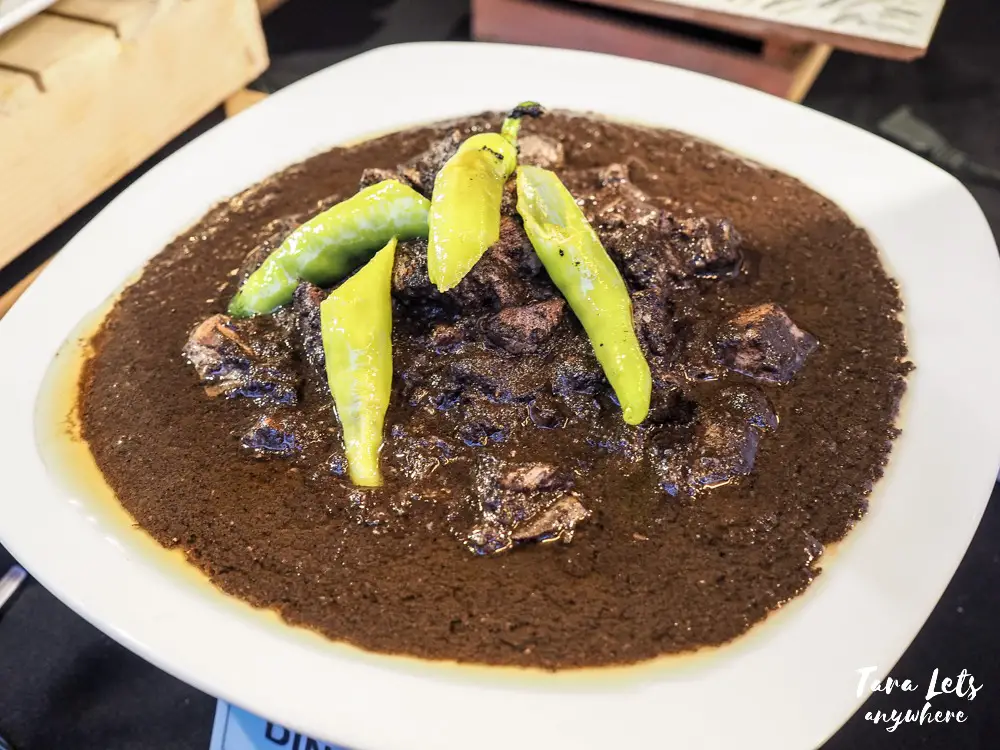
17 Weird Filipino Food to Challenge Your Taste Buds
The Philippines, with its over 7000 islands, isn’t just a hotspot for stunning beaches but also a treasure trove of gastronomic dishes that are as unique as they are delicious.
Here we’ve compiled the top weird Filipino foods you need to try — especially if it’s your first time visiting the Philippines! Just to be clear, “weird” is clearly a subjective word. If you’re a Filipino like us, a lot of these foods wouldn’t seem weird at all. Balut? Pssh. We grew up snacking on that.
Without further ado, here’s a list of weird yet amazing Filipino foods that are guaranteed to give you a taste (quite literally) of the country’s adventurous eating spirit.
Contents
1. Balut
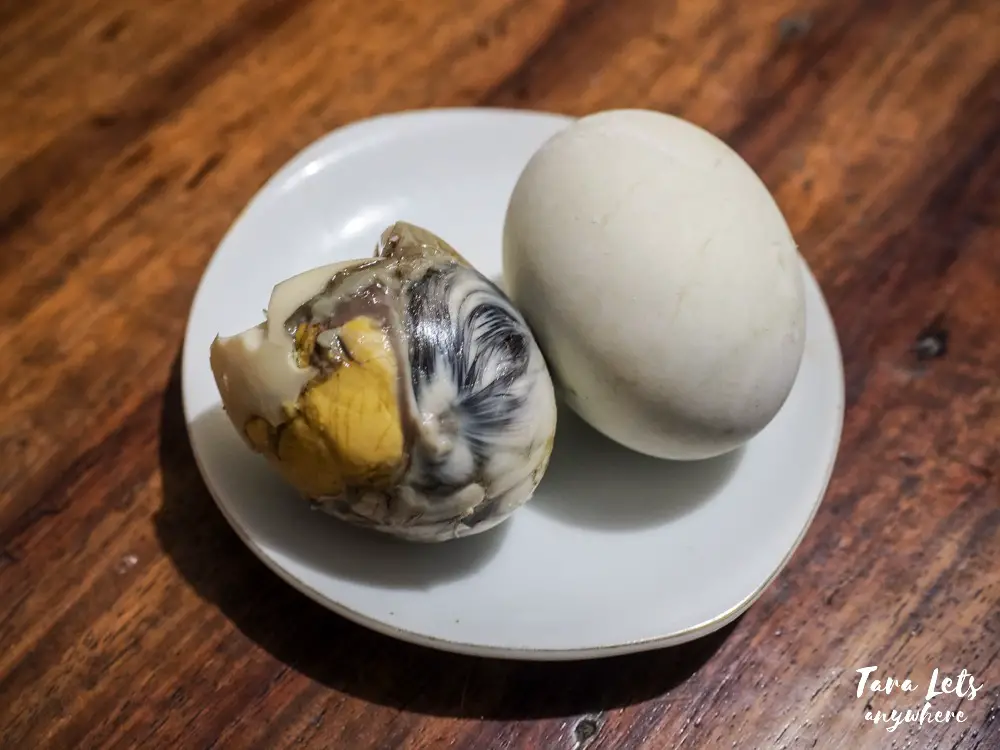
They say that balut is the Filipino initiation dish. Balut is a fertilized egg with a nearly developed embryo inside, boiled and eaten from the shell.
It’s like Fear Factor met street food, and they created a delicacy.
Here is how you eat the balut: crack a small opening in the egg shell and slurp up all the delicious soup. Then eat the yolk and the embryo. You may also add a bit of salt.
Balut is one of my favorite late-afternoon snacks growing up. It’s sold by roaming balut vendors, along with penoy and other Filipino snacks.
2. Isaw

A lot of the weird Filipino foods you’ll find in this list are grilled meats sold in local ihawan (roadside grilling station), and we’ll start with the Filipino favorite, isaw.
Isaw are grilled chicken intestines, carefully cleaned and skewered. It’s grilled and basted with a marinade and then eaten with the sauce of your choice (sweet sauce, sweet/spicy sauce, or vinegar).
I actually like eating it with rice when I’m craving for a delicious yet budget meal.
3. Adidas
No, not the shoes, but grilled chicken feet! There is not much meat in chicken feet but it has so much flavor, hence why it’s a popular dim sum and a favored ingredient in many Chinese dishes.
Adidas is soft with a nice smoky flavor. They’re a common Filipino street food (along with isaw etc.) and the ultimate bar chow. A cold beer on one hand, an Adidas stick on the other — a truly happy hour moment.
4. Helmet
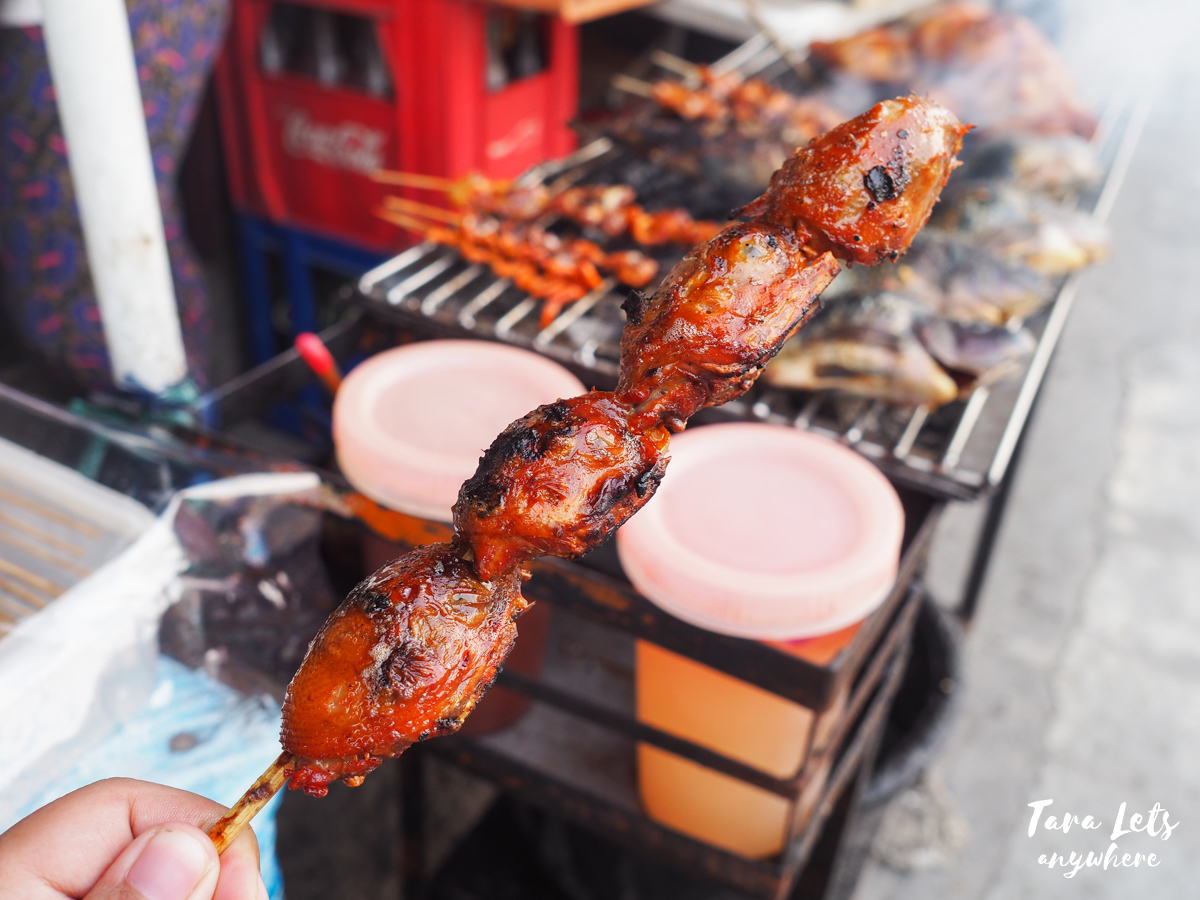
When it comes to using a chicken’s body parts for food, nothing goes to waste. Hemlmet refers to chicken head – these little noggins are marinated, skewered, and grilled to a perfect char, served up with a vinegar dip.
For me, the best part of the helmet is the brains! Soft and very tasty.
Eating a chicken head might sound like a dare, but in the streets of the Philippines, it’s just another fabulous Friday night. Who knew bravery tasted so good?
5. Betamax
Betamax refers to grilled squares of congealed chicken or pork blood, skewered and grilled until firm. It is named after the old-school Betamax tapes.
This is also one of my favorite merienda growing up! It’s also one of the cheapest ihaw-ihaw so we could eat as much as we could.
Not the usual movie snack, but in the streets of Manila, it’s a blockbuster hit.
6. Tamilok
Tamilok is one of the most famous exotic Filipino foods, as it is often featured in the media. And by “famous” — I mean it is weird even by Filipino standards, hence the intrigue whenever it is shown in the TV.
Tamilok is a delicacy from the Palawan region made from woodworms found in decaying mangrove logs. Contrary to popular belief, it is not literally a worm but a species of a saltwater clam.
Locals say that tamilok does not taste like anything else. Others describe it as similar to oyster in appearance, but sweeter and milkier.
These slimy creatures are typically eaten raw with vinegar, calamansi, and chili peppers.
7. Chichaworms
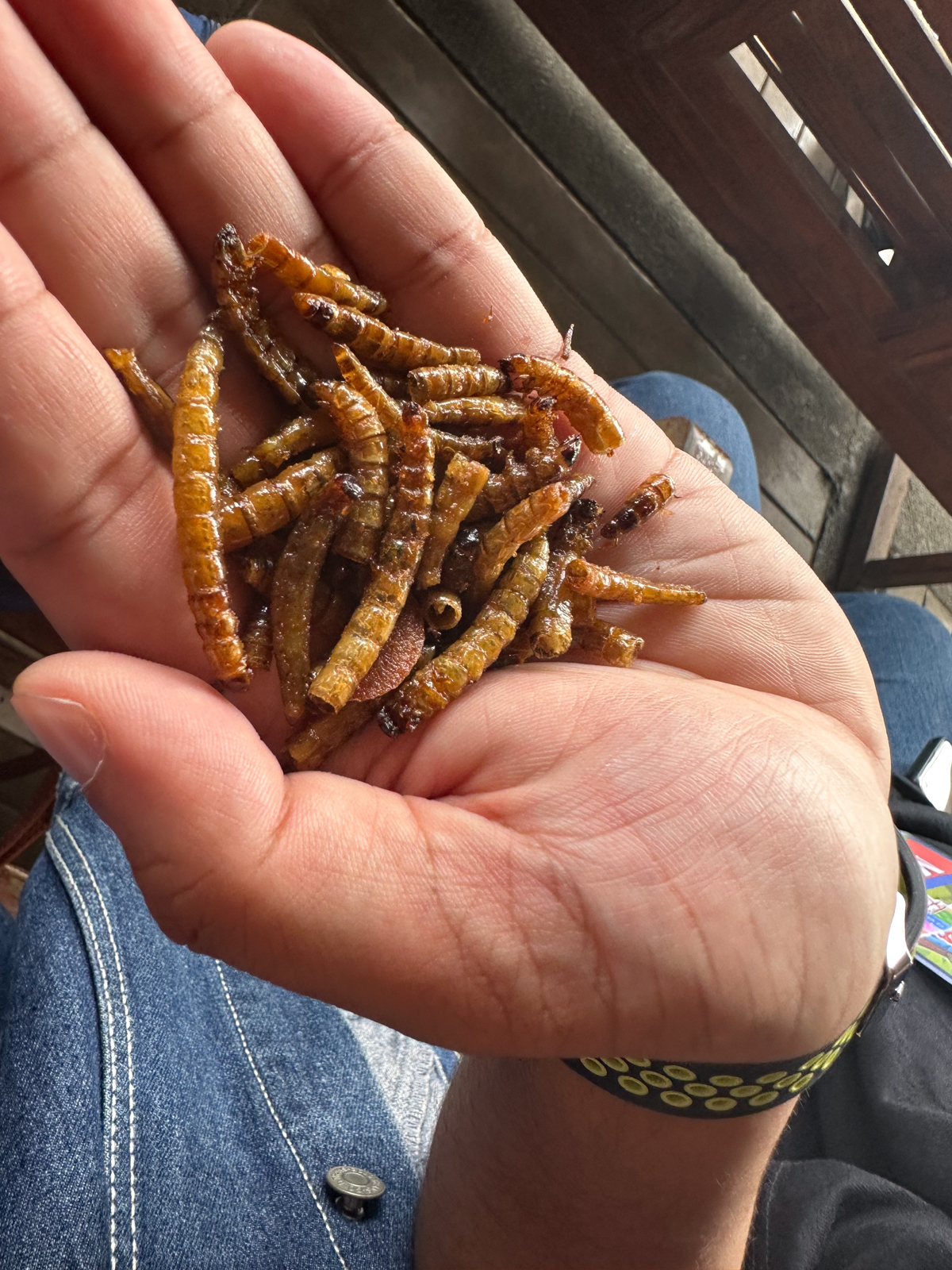
Chichaworms (or crispy crawlings) is a delicious snack made of deep-fried worms, seasoned with salt, sugar, and chili powder. They can be found in certain provinces such as Bohol and Isabela.
I have personally tried them and they are actually pretty good. It’s crispy and tasty, and the shells seemed to be empty. I guess the insides were fried off? Anyway, if you want to try weird Filipino foods but on the safe side, this would be a good start.
8. Soup No. 5
Don’t ask, just eat. This soup contains various cow parts — and by that we mean a bull’s testicles and penis.
It’s hot, spicy, and will knock your socks off both with its flavor and aphrodisiac claims.
I haven’t tried it personally, but it’s not very uncommon and even popular restaurants like Balaw-Balaw in Rizal have it in the regular menu.
9. Dinuguan

A savory, rich stew made from pig’s blood, meat, and entrails. Some refer to it as “chocolate meat,” although I haven’t really met anyone who describes it that way.
Despite its appearance, it’s incredibly flavorful and a perfect match with puto (steamed rice cakes) or rice.
If you want to try dinuguan, simply head to your nearest local eatery or Filipino restaurants like Goldilocks.
10. Kamaru
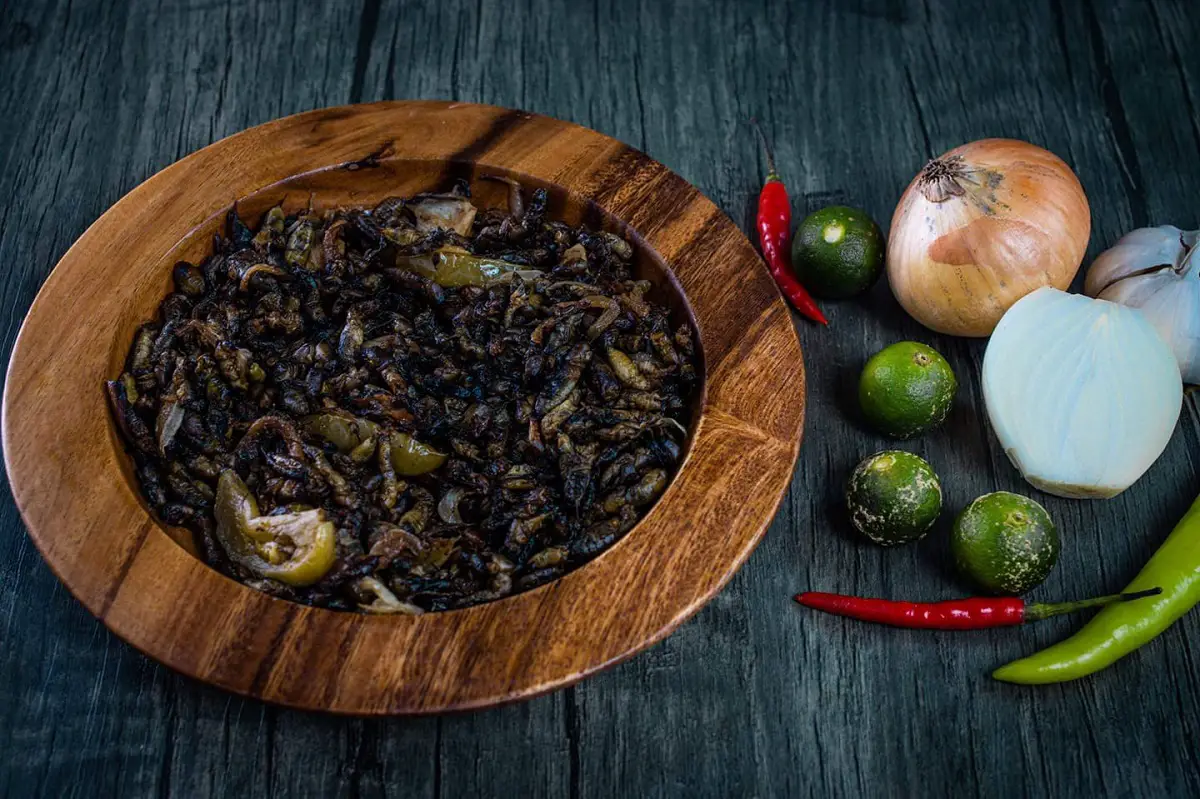
Feeling crunchy? These mole crickets (sometimes referred to as rice field crickets) are a delicacy from Pampanga. They are often stir-fried for a meal that’s protein packed and truly textured. Some locals also prefer to have it adobo style or deep fried.
11. Chicharon bulaklak
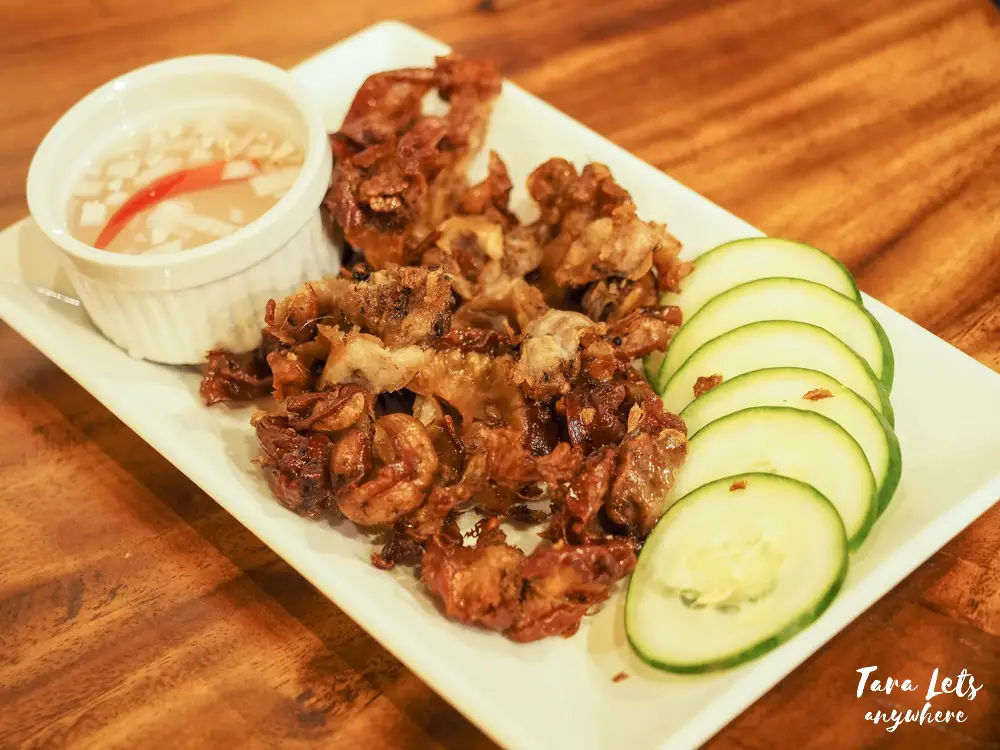
Chicharon bulaklak is one of the most common exotic foods in the Philippines. It refers to crunchy, deep-fried ruffles or pork mesentery. The term “bulaklak” means “flower” in English, which describes how the meat blooms like a flower when fried to perfection.
Mesentery is a thin transluscent membrane that surrounds the intestines of pigs. It is prepared by boiling with seasonings and then dried. Then it is deep-fried in hot oil until it becomes golden brown and crispy.
Chicharon bulaklak is a common snack and/or pulutan (beer chow), served with vinegar dipping sauce. A testament to the Filipinos’ love for all things crispy.
12. Lukot
Often mistaken for seaweed, lukot is the egg sac of the sea hare known as donsol. It is a delicacy in certain provinces in Visayas and Mindanao, where it can be harvested in seagrasses during low tide and then sold in local markets.
It’s used as an ingredient in various dishes, such as kinilaw, ensalada, and tinolang isda.
13. Sisig
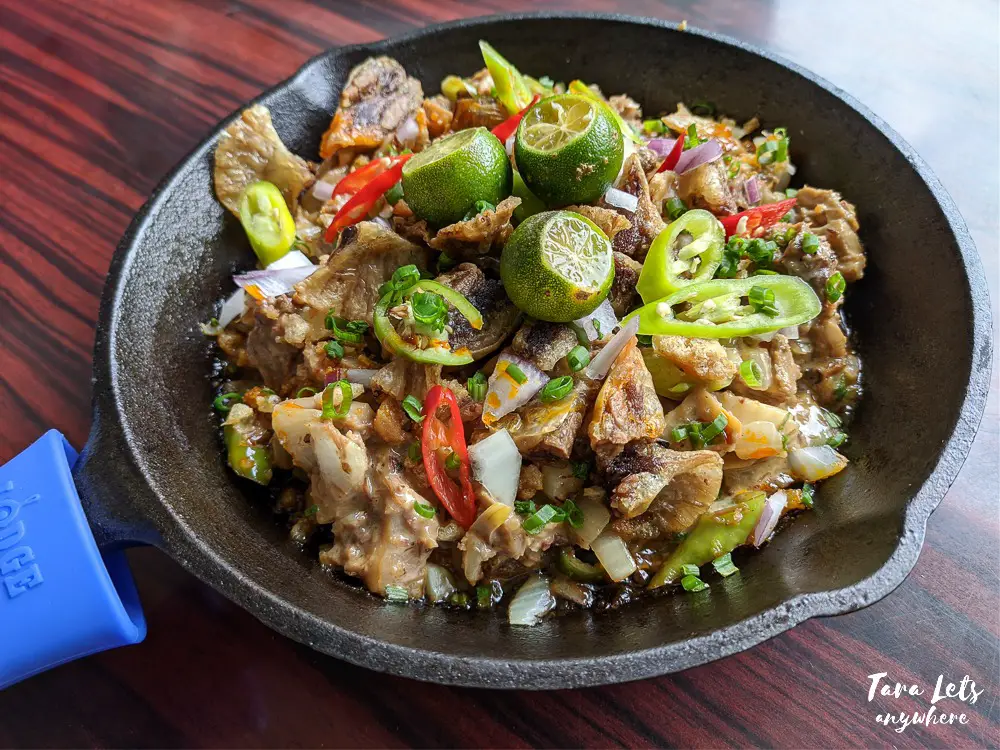
Sisig is one of the best Filipino dishes ever and the reason it’s included in this list of weird foods in the Philippines is that it is essentially made from chopped pig’s face, including the cheeks, ears, and sometimes snout.
These parts are simmered until tender and then grilled or fried to achieve a crispy texture. The cooked meat is then chopped and seasoned. Once prepared, it’s served on a hot sizzling plate and usually topped with raw egg, which is then mixed to coat the meat. Sisig is usually eaten with rice or alone as pulutan (beer chow). For non-pork eaters, chicken, seafood, and even tofu are sometimes used as alternative protein sources.
14. Papaitan
Papaitan is a stew traditionally made from the innards of goat or beef, particularly the liver, heart, and intestines. It’s a staple in many Filipino households, particularly in the Ilocos and Cordillera regions. It’s also sold in casual eateries in Manila, often paired with rice.
Its name “papaitan” is derived from the Tagalog word “pait” (meaning “bitter”), referring to the distinct bitter flavor of the stew from the addition of bile. Some modern versions of papaitan may omit the bile or use substitutes to mellow out the bitterness while still retaining the essence of the dish.
Papaitan is an acquired taste. Personally I’ve tried papaitan a few times and don’t really care much for it.
15. Tuslob buwa
Dip into something different. Tuslob buwa, which translates to “dip in bubbles,” is a popular dish in Cebu City made from pig’s brain and liver cooked in a savory broth. It’s often eaten by dipping puso (hanging rice) into the bubbling mixture.
16. Bagoong
Bagoong is fermented shrimp paste, known for its unique flavor and pungent smell. It’s used as a dip for fruits like green mango and singkamas (jicama) and also as an ingredient in dishes, particularly kare-kare, pork binagoongan, and pinakbet, where it adds depth and umami.
Although bagoong is a common condiment loved by Filipinos, those who are unfamiliar with it may find the smell too overwhelming.
17. Durian
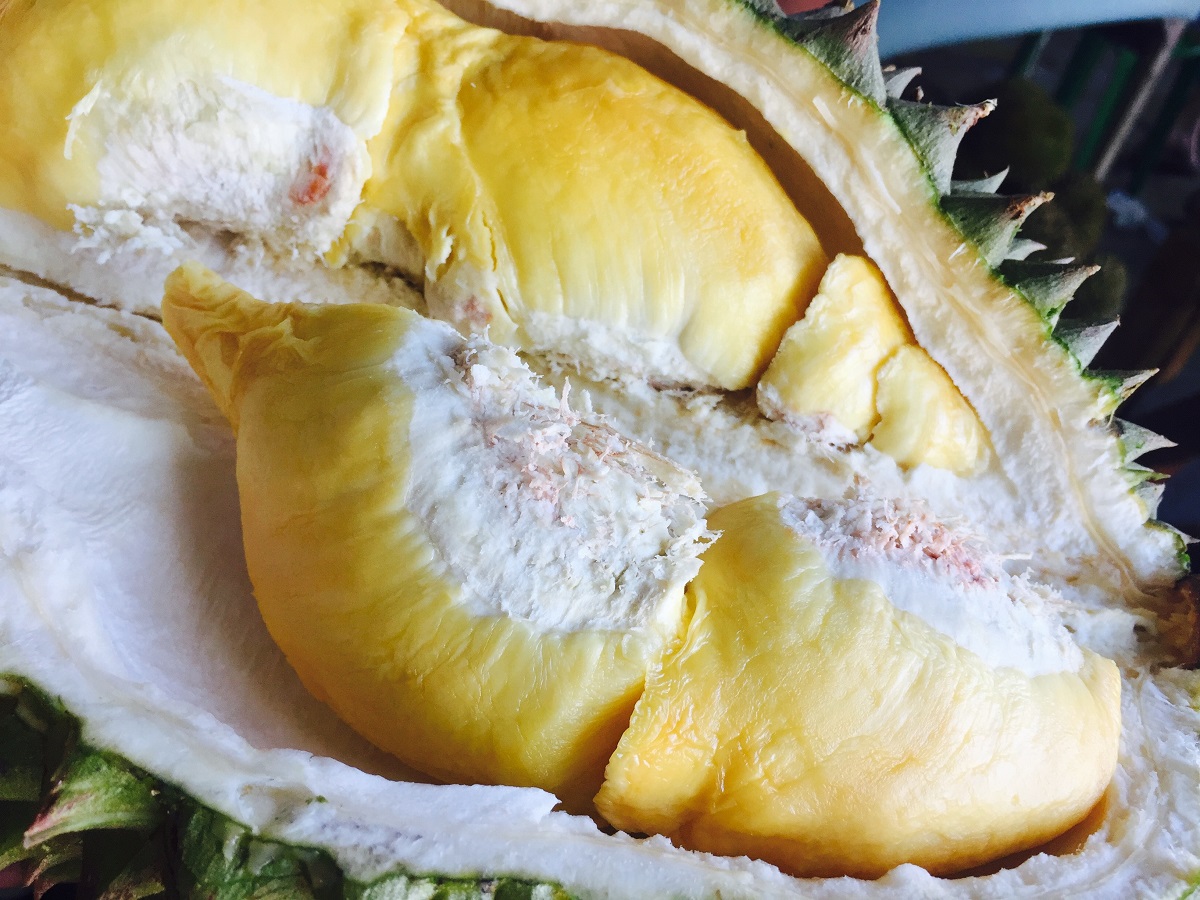
Tagged as the “king of fruits,” durian’s smell is infamously pungent, but get beyond that, and the creamy, rich taste is regal indeed.
I’ve eaten durian a few times, in the Philippines and when I lived in Kuala Lumpur. I actually prefer its sister fruit marang, which is more palatable and less smelly than durian. I also like durian-based products, like durian pastillas.
Durian — you either love it or run from it.
That concludes our list of weird Filipino food! The question is, are you brave enough to try them all? Whether you are or not, one thing is for sure — Filipino cuisine is never boring! Can we get a “cheers” with a side of isaw?
What to read next:
Foodie or just someone who wants to find a good place to eat? Check out these related articles:
For the best foodie destinations:

Katherine Cortes is a long-time backpacker and a freelance writer/editor. She likes beaches, snorkeling trips, and relaxing staycations (preferably with bath tubs!).



